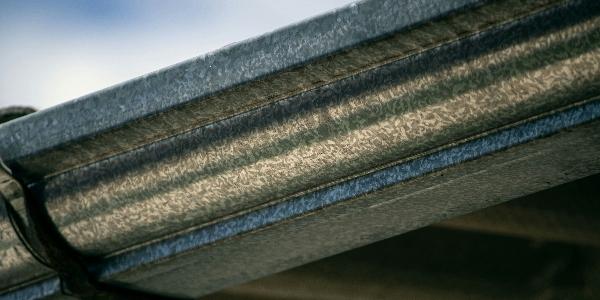UP TO THE MINUTE
Metal Roofs Versus Hurricane Winds

By DECRA Metal Roofing.
Metal roofs are strong enough to stand up against hurricane conditions.
There is a reason why roofs in hurricane regions have such meticulous building code requirements. Hurricanes are the most intense natural disasters we face in the U.S. Just last year, damages from hurricanes cost $47 billion. With 29% of the total U.S. population living in coastal areas prone to hurricanes, a roofing system that can stand up to storm debris, wind uplift and wind-driven rain is crucial.
DECRA’s stone-coated steel products have been rigorously tested to comply with high-velocity hurricane zone requirements, including Miami-Dade, Florida, which is known as the most severe wind exposure market. Below, we take a look at how DECRA matches up against traditional roofing materials in performance categories most critical for businesses and houses in hurricane regions.
Top 3 threats from hurricanes
If your business or home relies on wood shakes, clay tiles, or asphalt shingles to withstand the frequent assaults of hurricanes, it’s at risk for costly damage. Stone-coated steel can help protect your property in high-risk areas from the following threats caused by hurricanes.
1 - Wind uplift resistance
Roof damage caused by wind occurs when the air pressure below the roofing system is greater than the air pressure above. As wind flows over the building or house, the pressure directly above the roof surface decreases. At the same time, internal air pressure increases due to air infiltration through cracks. This results in a push-pull force working together to separate the roofing materials from the roof deck, otherwise known as wind uplift.
DECRA’s stone-coated steel roofing profiles feature a unique interlocking panel system to keep the multi-layered panels firmly in place in hurricane-force winds. Additionally, the roofing profiles are backed by a warranty for winds up to 120 mph, and are lab tested at twice that velocity.
Traditional roofing materials have significant shortcomings when it comes to wind. Wood shakes, for example, tend to split and loosen around the fasteners making them extremely prone to wind uplift. Easily fractured clay tiles are also highly prone to wind uplift, with few backed by any warranty at all.
Fortunately, DECRA metal roofs are designed to replicate traditional roofing styles familiar to coastal areas without sacrificing style or strength.
2 - Hail and storm debris impact
Ensuring the roof stays firmly in place is step one in hurricane conditions. Hurricanes bring with them warm, moist air, which can spin off thunderstorms with intense blasts of hail and rain. The result? An instability in the atmosphere–namely, a layer of hot air with cold air above it, sometimes causing tornadoes.
DECRA’s zinc-aluminum alloyed, high-grade, multi-layered steel with acrylic formula bonding carries the highest possible UL2218 Class 4 impact rating and is warrantied for hail up 2.5 inches in diameter. This resistance is critical for withstanding storm debris in hurricane or tornado-force winds.
Hail can weaken the seal integrity of asphalt shingles. When this happens, the roof is exposed to the elements, which can lead to leaks.
3 - Wind-driven rain
Traditional roofing materials prone to wind uplift also leave the roof deck vulnerable to wind-driven rain. In hot weather, asphalt is known for "fish mouthing,” or cupping and curling around the shingles. When hurricane-strength winds blow through, the unsightly warped shingles catch wind-driven rain, if they manage to stay in place.
Wood shakes are also prone to warp after repeated wet-dry cycles. Both shingles and shakes are only fastened at the nose or top, leaving the buttons to lift and catch wind and rain, while exposing the underlying roof deck to damaging leaks.
With DECRA Metal Roofing products, there are no gaps in the interlocking system to scoop in wind and rain. The profiles are fastened securely in place with corrosion-resistant stainless-steel screws to ensure that wind-driven rain can’t penetrate the underlying deck.
DECRA has even performed extensive wind-driven rain testing at speeds up to 110 mph to protect its roofing profiles against water penetration under the most extreme wind conditions.
Added protection against the elements
Not only do DECRA roofs protect against hurricane threats, but they also add strength to the roof deck. Shear forces are those that impact the building from the side, such as horizontal winds generated by hurricanes. These sideways winds stress the entire structure, which enables buckling of the underlying roof deck.
DECRA’s stone-coated steel profiles provide a multi-layered reinforcement to prevent buckling damage unlike floppy asphalt shingles, flimsy wood shakes, or fragile clay tiles. They’re also backed by a Lifetime Limited Warranty, which is important for residents in living in high-risk hurricane zones.
Prep for storm season with the protection of stone-coated steel
As hurricane season nears, it’s crucial to protect your business or home with the strength of stone-coated steel. When you’re ready to join the one million customers who have chosen DECRA, contact one of our roofing advisors to get started.
Learn more about DECRA in their RoofersCoffeeShop® Directory or visit DECRA.com
Original article source: DECRA


















Comments
Leave a Reply
Have an account? Login to leave a comment!
Sign In